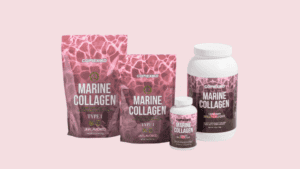Last Updated on January 16, 2025 by Packoi Team
There is a lot of talk about going green in business, but what does that actually mean? And more importantly, what can you do as a business to make the switch to biodegradable materials? Going green is important for the health of our planet because it reduces the environmental impact of nasty plastic packaging.
If you’re unsure how to tackle this business aspect, you’re in the right place. In this guide, we will explore eco-friendly and sustainable packaging materials you can use to make your business go green. We will also provide tips on how to choose the best material for your business needs. So, read on to learn more about eco-friendly packaging solutions and how to use them.
1. Recycled Paper Packaging
Your search for long-lasting and biodegradable packaging material will come to an end when you use recycled paper packaging. These eco-friendly packaging ideas are made from post-consumer waste—paper that has been used and discarded by consumers, businesses, and institutions—which would otherwise end up in landfills.
The recycled paper does the following:
- Reduces environmental pollution
- Conserves energy
- Is it as durable as the raw materials of a new paper?
According to the Environmental Protection Agency (EPA), recycling one ton of paper saves enough energy to power the average home for six months, conserves 7,000 gallons of water, and prevents 60 pounds of pollution from being emitted into the atmosphere.
Also, it takes more energy and water to produce virgin paper—paper that is made from compostable poly mailers that have never been cut before—than it does to produce recycled paper.
2. Corrugated Cardboard

As a business owner, you want to do what’s right for the environment. You know that using sustainable packaging solutions is important to both your customers and the planet. But you might not realize that something as simple as switching to corrugated packaging can make a big difference.
Corrugated recycled cardboard boxes are made from biodegradable packaging materials, which means they are a renewable resource. However, plastic and bubble wrap are made from fossil fuels, which are non-renewable and harm the environment. What’s more, it can take hundreds of years for plastic packaging and bubble wrap to break down in landfills, while corrugated cardboard boxes are sustainable packaging options that can be recycled up to 7 times.
Here’s why corrugated cardboard is an eco-friendly packaging choice:
- Made from recycled paper, a renewable resource
- Fully biodegradable and can be recycled up to 7x
- Paper production emits far less carbon dioxide than plastic
Because corrugated recycled cardboard boxes are recycled, they cost less to produce than plastic, and you won’t have to pay disposal fees when you’re finished with them.
3. Paperboard
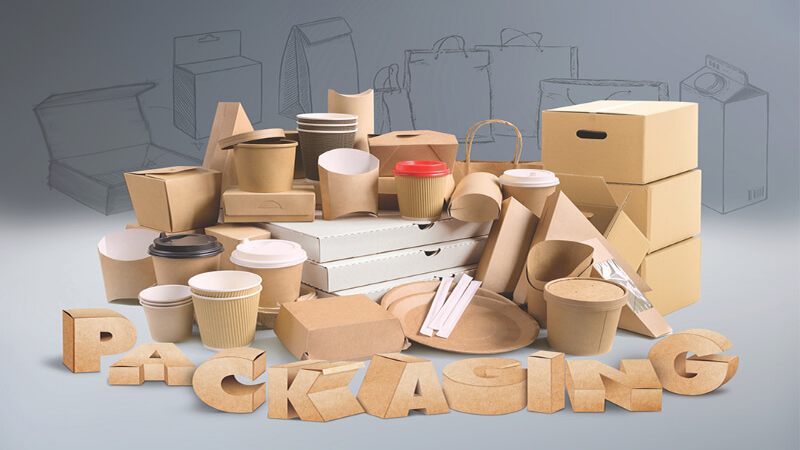
Paperboard is another compostable packaging material made from renewable wood pulp that you can use for product packaging. The main benefit of wood pulp-based paperboard packaging is its lightweight and durable design. This combination means that using paperboard can reduce your shipping costs while still ensuring that your products arrive safe and sound. In addition, paperboard packaging types are also more sustainable, so you can feel good knowing that you’re making a positive impact on the environment with your packaging solution.
You should introduce paperboard in your product packaging because:
- Paperboard is made from renewable wood fiber.
- Paperboard makes recyclable packaging that is also compostable.
- This packaging has a lower carbon footprint than other types of packaging.
Paperboard is cheaper than many other packaging materials, so you’ll save money on your packaging costs without sacrificing the quality of your sustainable business. As we mentioned, paperboard comes from renewable resources, so it’s an environmentally friendly option that doesn’t burden the planet like many other packaging materials.
4. Reusable Packaging Materials
Reusable packaging materials are made of materials that can be readily reused for future shipments, such as boxes, bags, bins, tin boxes, or anything else that can be cleaned and used again.
Reusable packaging materials are more environmentally friendly than single-use packaging, as they can be reused multiple times before being disposed of. This reduces waste, energy consumption, and the number of resources required to make new packaging.
Additionally, reusable packaging materials can be designed to be sturdy and durable, making them less susceptible to damage during shipping, which can reduce the likelihood of damage or loss to the goods being shipped. These benefits make reusable packaging materials a more sustainable and cost-effective option for businesses and consumers alike.
5. Compostable Materials

If you’re ready to introduce sustainable packaging to your business, moving away from traditional packaging materials is inevitable. Often, the packaging is made from non-recyclable materials like plastic or Styrofoam that end up in landfills. However, being one of the innovative companies that stick to compostable packaging materials can reduce your business’s environmental impact. Here are some of the best compostable packaging materials to use for your business:
Compostable Plastics
Plastics are one of the most problematic types of waste because they can take hundreds or even thousands of years to break down in landfills. However, there are some types of compostable plastics that can be used for packaging. These plastics are made from plant-based materials like cornstarch or potato starch and will break down in a commercial composting facility within a few months.
Bioplastics
Bioplastics are similar to recycled plastics but are made from even more eco-friendly and sustainable alternative packaging solutions like algae, green cell foam, or straw. These types of plastics often degrade more quickly than traditional plastics and don’t require high temperatures to break down, making them ideal for both home and commercial composting.
6. Tin Boxes packaging
Tin boxes, also known as tin cans, are containers made of tin, a metallic element. It is commonly used for packaging food, drinks, and other products due to its ability to form a durable coating when placed in contact with the air. Tin boxes are often lined with an additional layer of plastic or paper to provide additional protection and insulation.
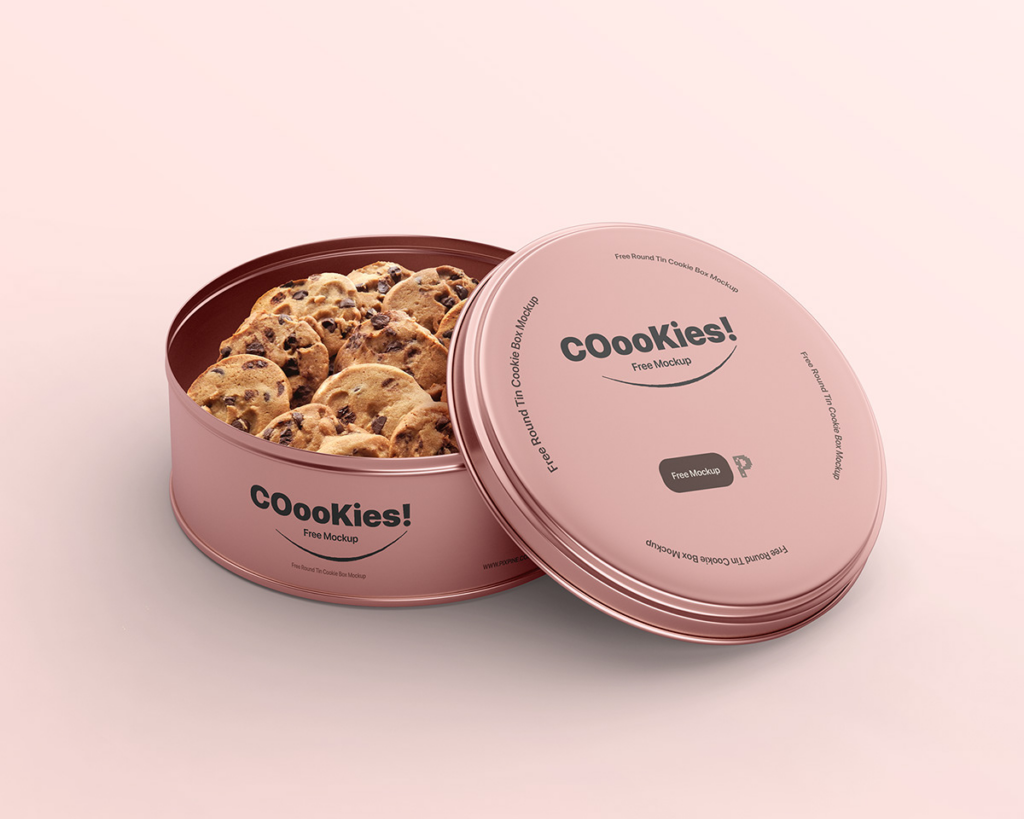
Some key advantages of tin box packaging include its durability, reusability, and recyclability. They can be used multiple times before needing to be replaced, which can reduce waste and save money. Additionally, many tin boxes are designed to be easily stacked, which can make them more efficient to transport and store.
However, it’s important to note that while tin box packaging has many advantages, it also has some potential disadvantages, including a higher initial cost compared to other types of packaging and the potential for rust or corrosion over time. These considerations should be taken into account when evaluating tin boxes as a packaging option.
7. Hemp and Bamboo Packaging
Hemp is a durable and sturdy plant fiber that businesses use to make everything from clothing to paper to, you guessed it, packaging. Hemp is also 100% biodegradable, meaning it won’t add to the growing problem of plastic pollution.
Bamboo is another plant that you can use for sustainable packaging. Bamboo is one of the fastest-growing plants in the world, and it’s also naturally antimicrobial. Therefore, it won’t harbor bacteria the way some other materials can, making it a safer choice for food packaging.
Hemp and bamboo are two newly hyped product packaging materials because:

- They are both renewable resources and can be replenished at a rate that is equal to or faster than the rate at which they are used.
- Both hemp and bamboo are tough and durable, so you can use them multiple times before recycling or composting them.
- Hemp and bamboo packaging is biodegradable, meaning that it will break down into its natural components over time. This makes it much safer for the environment than excess packaging, which can take hundreds of years to decompose.
8. Glass Jars and Bottles
You may be wondering why glass jars and bottles are such great eco-friendly packaging materials. After all, they’re made from sand, which is a natural resource, so why not just use plastic? But it’s different with glass bottles and jars, as no precious natural resources go into making them. Glass is one of the most highly recyclable materials, and we can repeatedly use it without creating additional waste. Also, since glass is made from natural resources, it is biodegradable, and you can feel good about using it knowing that it won’t end up in a landfill somewhere.
Here are the top factors that make glass a smart packaging choice:
- Glass is made from all-natural, sustainable ingredients like sand, soda ash, and limestone.
- You can recycle glass endlessly without losing its quality or purity.
- Glass packaging is also very durable, meaning it won’t break down in landfills like other materials.
Glass is also non-porous, which means that it won’t absorb flavors or odors the way that plastic can. If you want your products to taste, feel, and smell fresh, glass is surely a reasonable packaging material.
9. Kraft Packaging Paper
Kraft packaging paper is a type of paper specifically designed for use in packaging applications. It is made from fibers originating from wood pulp and has excellent properties, such as good strength, durability, and appearance.
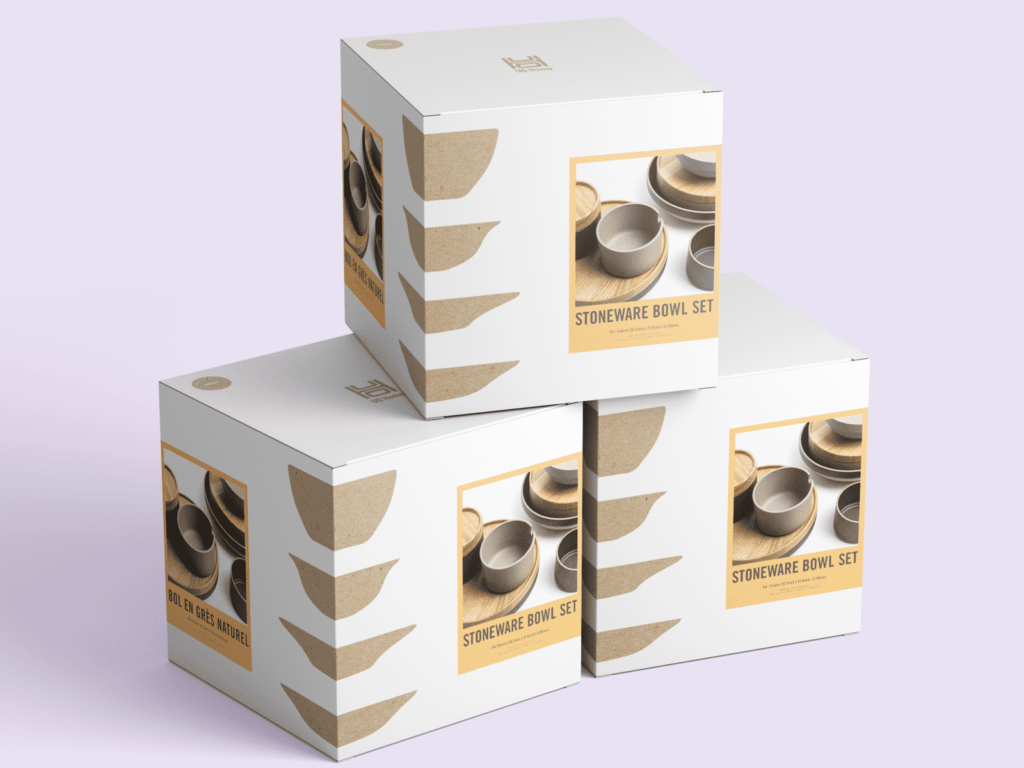
Here are some of the benefits of using Kraft packaging paper for packaging:
- Strength: Kraft paper box is very strong and durable, which makes it suitable for a variety of packaging applications, such as boxes, envelopes, and wrapping paper.
- Appearance: Kraft paper has an attractive appearance, with a dull surface that is suitable for printing.
- Versatility: Kraft paper box can be used for a variety of packaging applications and is suitable for both light-weight and heavy-weight packages.
- Cost-effective: Kraft paper boxes are often less expensive than other types of packaging materials, which can save businesses money on packaging costs.
10. Post-Consumer Recycled Content
According to a report by the National Resources Defense Council (NRDC), Americans generate more than 300 million tons of plastic waste each year but only recycle 5% of it. That leaves a whole lot of plastic that ends up in landfills, where it can take centuries to break down.
When you use PCR (post-consumer recycled) in your packaging, you are helping to close the loop on plastic waste and giving new life to products that would otherwise end up in the trash. In addition, using PCR can reduce your dependence on packing materials, which saves energy and resources. And because PCR generally costs less than virgin materials, using it can also save you money. Here’s how you can use post-consumer recycled content to get sustainable packaging:
Use Recycled Polyethylene Terephthalate
PET is the most common type of plastic used in food and beverage packaging. It’s strong and lightweight, which makes it ideal for the corrugated packaging industry. And because it’s clear, it also allows customers to see what they’re buying.

Use Recycled High-Density Polyethylene
HDPE is another type of plastic that’s often used in the packaging industry. It’s similar to PET in that it’s strong and lightweight, but it’s not as clear. HDPE can also be recycled multiple times without any loss in quality.
Use Recycled Low-Density Polyethylene
LDPE is another more sustainable packaging material that’s frequently used for food packaging applications such as stand-up pouches and flexible cushioning materials. It’s soft and pliable, which makes it ideal for these types of applications. LDPE can also be recycled multiple times without any loss in quality.
11. Mushroom Packaging
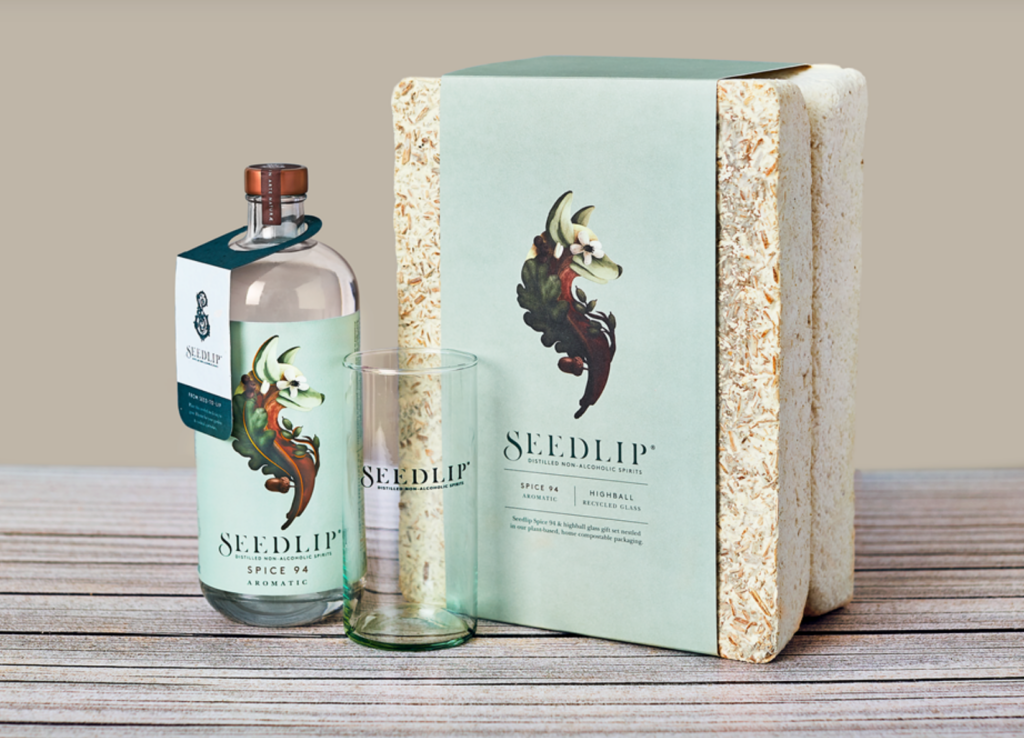
Mushroom packaging is a sustainable and environmentally friendly way to package products. It is made from by-products of the mushroom industry, such as the stems, caps, and spent mushroom substrate.
One of the main benefits of using mushroom packaging is that it is biodegradable, which means that it will break down and return to the soil naturally without relying on chemical processes. This makes it an excellent choice for businesses looking to reduce their waste and their environmental impact.
Mushroom packaging is also a renewable resource, as it is made from by-products of the mushroom industry. This makes it an excellent choice for businesses looking for a packaging solution that is both functional and sustainable.
3 Tips for Choosing Sustainable Product Packaging
Here are three tips for eco-friendly packaging:
1. Use Recycled Materials
One way to adopt eco-friendly options is to use recycled packaging materials. This can be anything from using recycled paper to using recycled plastic. Not only is this better for the environment, but it also shows that your company is socially responsible.
2. Use Reusable Packaging
This means using packaging that can be used multiple times before it needs to be disposed of. An example of this would be using a reusable shopping bag instead of a plastic bag.
3. Reduce Packaging Waste
Use less packaging overall or make sure that the packaging you use can be easily recycled or reused. One way to reduce packaging waste is to use biodegradable packing peanuts instead of styrofoam ones.
Conclusion
As we have seen, various eco-friendly packaging alternatives can make the packaging industry sustainable.
So, let’s all do our part to make sustainability the new norm. Choose eco-friendly packaging alternatives for your next product launch or marketing campaign and help to make a difference for our planet.
Do you need custom packaging for your products? If so, Packoi Printing has heard you. We offer a wide variety of packaging options to fit your needs, and our team of experts can help you choose the right option for your product. We’ll work with you to ensure that your packaging is both functional and stylish, and we’ll make sure it meets all of your requirements. Don’t wait any longer. Contact us today, and let us help you take your business to the next level.


